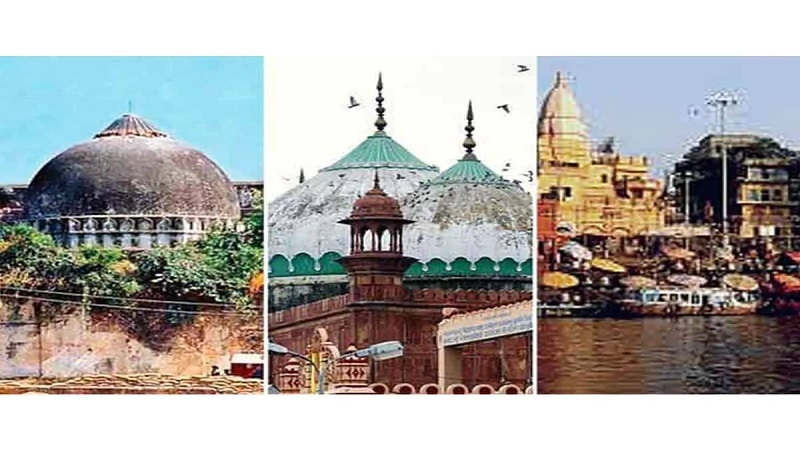Published on: May 18, 2022

PLACES OF WORSHIP ACT 1991
PLACES OF WORSHIP ACT 1991

INTRODUCTION
- The Act was brought in 1991 by the then pseudo-secular government at a time when the Ram temple movement was at its peak. Then, communal tensions in India were at peak
- Parliament determined that independence from colonial rule furnishes a constitutional basis for healing the injustices of the past
OBJECTIVES
- The aim of the Act was to freeze the status of any place of worship as it existed on August 15, 1947
- It was also to provide for the maintenance of the religious character of such a place of worship as on that day
- It was intended to pre-empt new claims by any group about the past status of any place of worship and attempts to reclaim the structures or the land on which they stood
- It was hoped that the legislation would help the preservation of communal harmony in the long run.
- It sought to provide the confidence to every religious community that their places of worship will be preserved and that their character will not be altered
PROVISONS
- The Act says that no person shall convert any place of worship of any religious denomination into one of a different denomination or section. It contains a declaration that a place of worship shall continue to be as it was on August 15, 1947
- Significantly, it prohibits any legal proceedings from being instituted regarding the character of a place of worship, and declares that all suits and appeals pending before any court or authority on the cut-off date regarding the conversion of the character of a place of worship shall abate.
- In other words, all pending cases will come to an end, and no further proceedings can be filed.
- However, any suit or proceedings relating to any conversion of status that happened after the cut-off date can continue
- Penal Provision: Anyone contravening the prohibition on converting the status of a place of worship is liable to be imprisoned for up to three years, and a fine. Those abetting or participating in a criminal conspiracy to commit this offence will also get the same punishment.
EXCEPTION UNDER THE ACT
- An exception was made to keep the Babri Masjid-Ramjanmabhoomi dispute out of its ambit as the structure was then the subject of litigation.
- The 1991 Act will not apply to ancient and historical monuments and archaeological sites and remains that are covered by the Ancient Monuments and Archaeological Sites and Remains Act, 1958.
- It will also not apply to any suit that has been finally settled or disposed of, any dispute that has been settled by the parties before the 1991 Act came into force, or to the conversion of any place that took place by acquiescence.
ISSUES
- Constrains Judicial Remedy:The act amounts to taking away the right of the people to seek justice through the courts and obtain a judicial remedy. It is argued that the Act takes away the rights of communities such as Hindus, Sikhs, Buddhists and Jains to reclaim the sites of their places of worship through legal proceedings.
- Contention on Cut-off date: Cut-off date of August 15, 1947, is arbitrary and irrational.
- Issue of Exemption: How the law could exempt the birthplace of Ram, but not that of Krishna.
- Restriction on Fundamental Right to Practise Religion:Violates the right to practise and propagate religion, as well as the right to manage and administer places of worship.
- Not in spirit of Secularism: Act goes against the principle of secularism and the state’s duty to preserve and protect religious and cultural heritage.
What has the SC said on the status freeze?
- In its final verdict on the Ayodhya dispute, the Supreme Court had observed that the Act “imposes a non-derogable obligation towards enforcing our commitment to secularism”.
- The court went on to say: “Non-retrogression is a foundational feature of the fundamental constitutional principles, of which secularism is a core component.”
- The court described the law as one that preserved secularism by not permitting the status of a place of worship to be altered after Independence.
- In words of caution against further attempts to change the character of a place of worship, the five-judge Bench said, “Historical wrongs cannot be remedied by the people taking the law in their own hands. In preserving the character of places of public worship, Parliament has mandated in no uncertain terms that history and its wrongs shall not be used as instruments to oppress the present and the future.”

